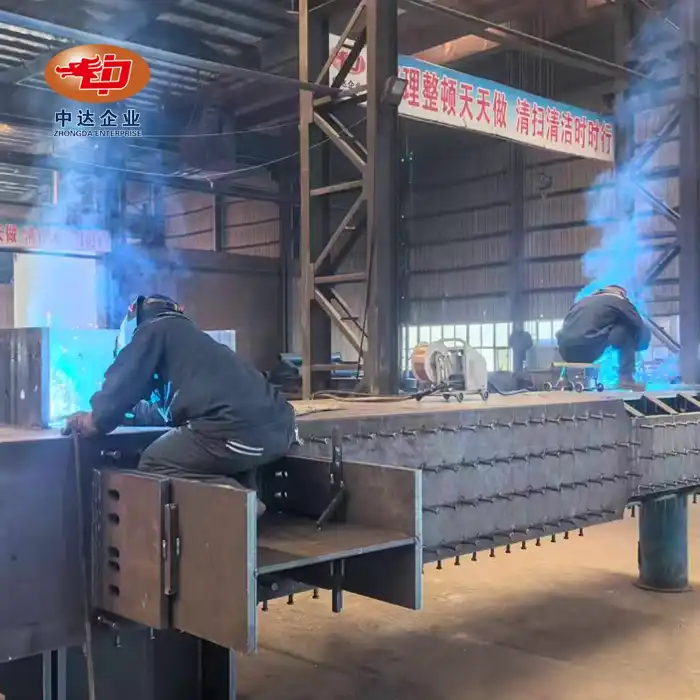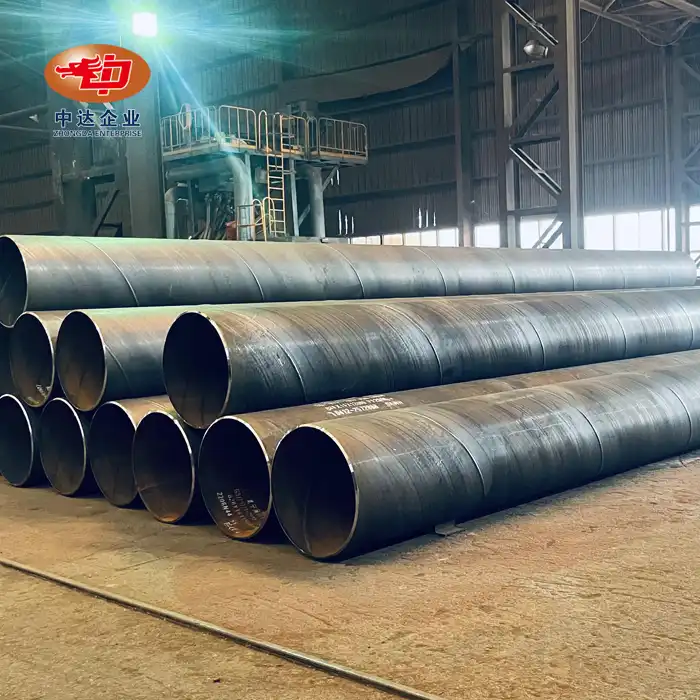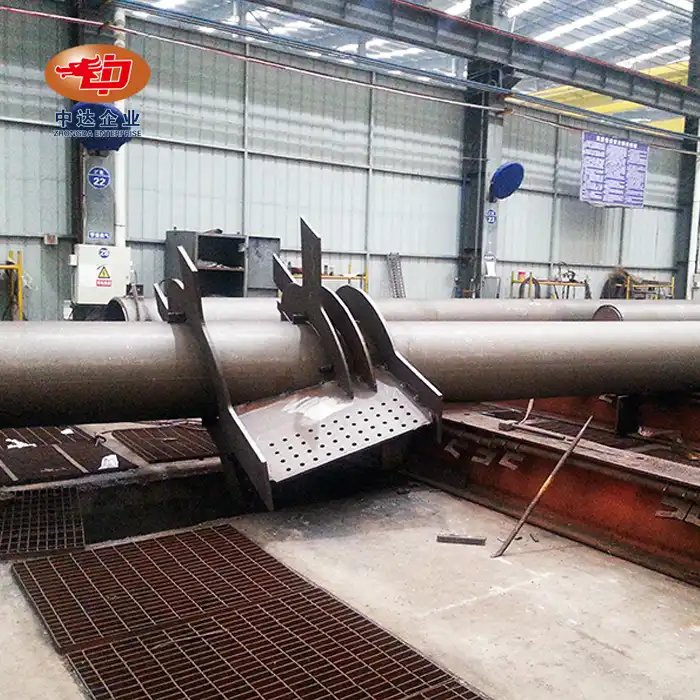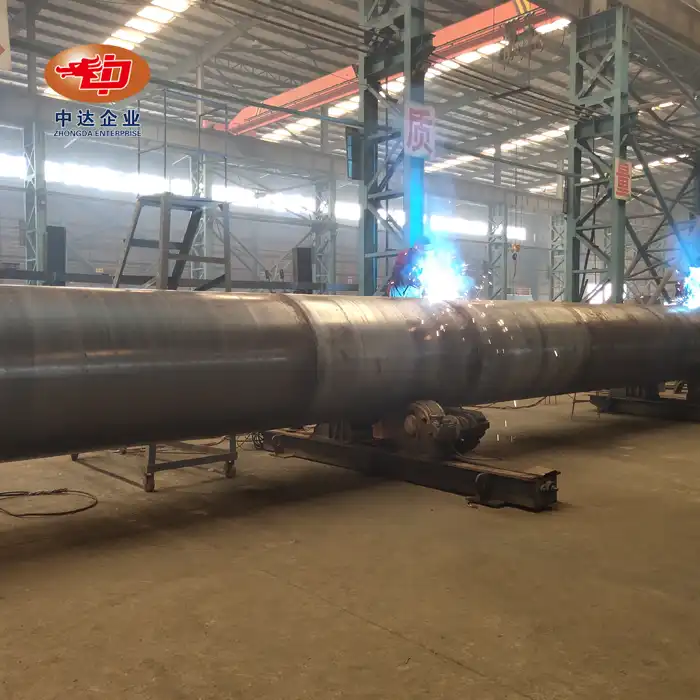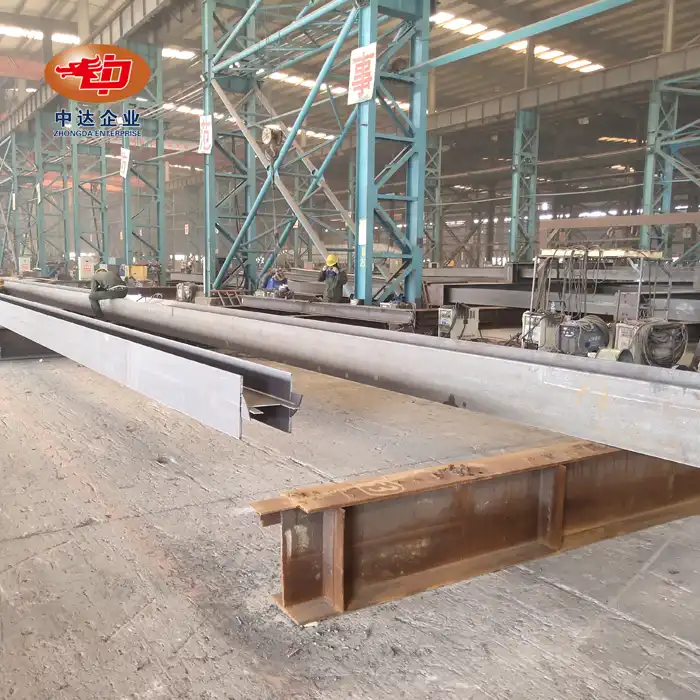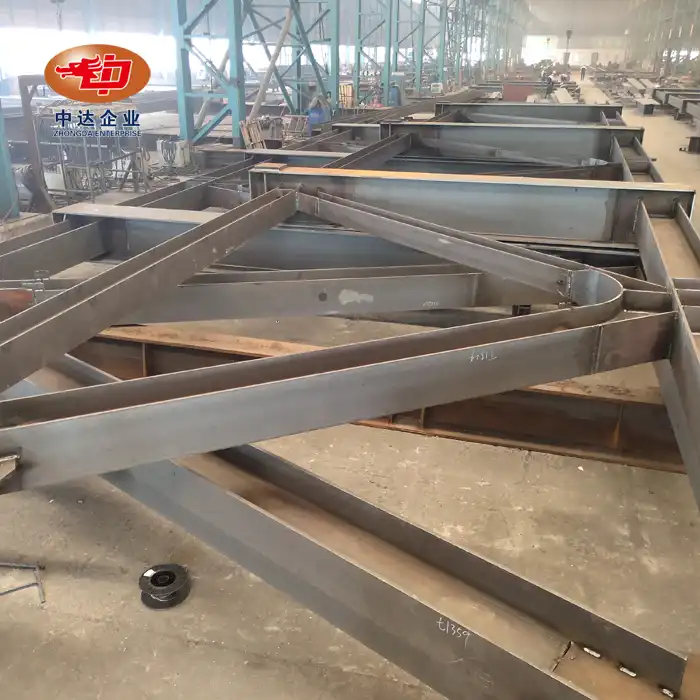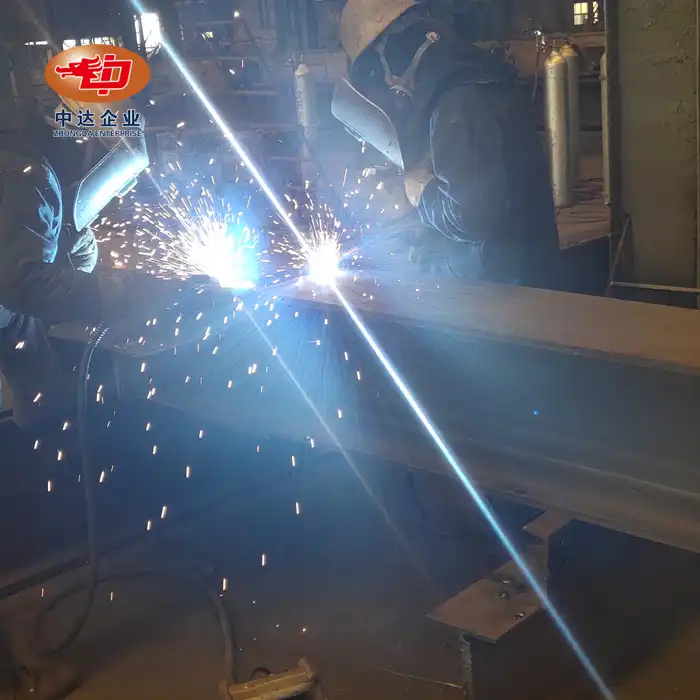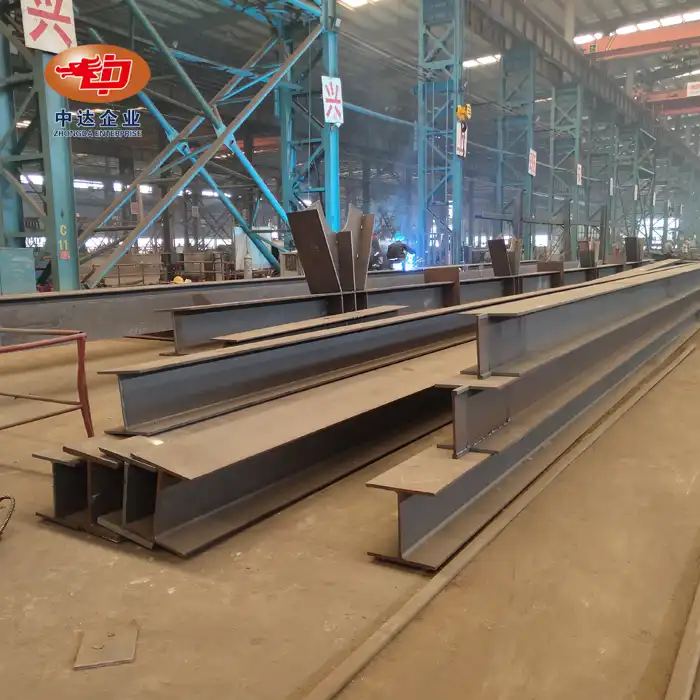
Comparing Plate Girders vs Box Girders in Bridge Engineering
When building a bridge, the choice between steel plate girders and box girders can have a big effect on how well the project turns out. Both structural elements have their own benefits, but finding the best solution takes careful thought about a number of factors. Plate girders are great for medium-span bridges and places where height limits apply because they are flexible and affordable. Box girders, on the other hand, are great for long-span bridges and curved lines because they are more rigid when turning. This comparison will go into detail about the main differences, which will help engineers and project managers make smart choices for the bridge designs they need to make.
At Shenyang Zhongda Steel Structure Engineering Co., Ltd., we specialize in manufacturing both high-quality plate girders and box girders. Our high-tech facilities, which include cutting-edge CNC machines and automated welding lines, make sure that the parts we make are exact and meet the strictest project requirements. With our expertise in BIM-driven prefabrication and innovative solutions like -60°C Weathering Steel Anti-corrosion Technology, we're equipped to tackle complex bridge engineering challenges across the globe.
Structural Characteristics and Load-Bearing Capacity
Plate Girder Design and Efficiency
Plate girders are versatile structural elements composed of steel plates welded or bolted together to form an I-shaped cross-section. Because these girders are so good at preventing bending moments and shear forces, they can be used in a lot of different bridge situations. Plate girders are designed in a way that lets the widths of the flanges and webs be changed to get the best use of material and load-bearing capacity.
At Zhongda Steel, we use cutting-edge laser technology to get exact measurements with ±0.5mm error, which makes sure that our plate girders work at their best. The flange thicknesses on our goods range from 14mm to 80mm, so they can be used for a wide range of projects. This careful planning means that bridges built with our plate girders will last longer and be more structurally sound.
Box Girder Strength and Torsional Rigidity
Box girders boast a closed cross-section, typically rectangular or trapezoidal, providing superior torsional rigidity compared to steel plate girders. They are especially useful for curved bridges and long-span buildings where torsional forces are high because of this. Better resistance to lateral buckling is another benefit of the enclosed form. This lets span-to-depth ratios be higher.
Our steel box girders at Zhongda Steel are engineered for exceptional performance in demanding applications. We employ high-strength Q345D steel for the main structure and Q420D steel for critical joints, ensuring robust load-bearing capacity. Our variable cross-section design, ranging from 1.25m to 8m in height, enables up to 20% weight reduction without compromising structural integrity.
Comparative Analysis of Load Distribution
When comparing load distribution between plate and box girders, it's essential to consider the specific bridge design requirements. Plate girders excel in distributing loads along their longitudinal axis but may require additional lateral bracing for stability. Box girders, with their closed form, inherently provide better load distribution across the entire cross-section, resulting in improved overall bridge performance under various loading conditions.
We've learnt a lot about how to best distribute loads for both types of girders through working on projects like the Shenyang Dongta Cross-Hunhe River Bridge, which has a steel frame that weighs 18,000 tonnes. Our engineering team leverages advanced simulation tools to analyze and refine load paths, ensuring maximum efficiency and safety in our bridge designs.

Fabrication, Transportation, and Installation Considerations
Manufacturing Processes and Quality Control
The fabrication of both plate and box girders demands precision and adherence to stringent quality standards. When making plate girders, there are usually fewer welding steps and the structure can be easier to put together. Box girders, while more complex due to their enclosed nature, offer advantages in terms of reduced on-site welding requirements.
At Zhongda Steel, our 120,000 m2 modern facility is equipped with state-of-the-art CNC machinery and automated welding lines, ensuring consistent quality for both girder types. We use strict quality control measures, such as non-destructive testing (NDT) to make sure the structure is sound and advanced measurement tools to check the accuracy of the measurements. Our ISO 9001:2015 certified quality management system guarantees that every girder meets or exceeds industry standards.
Logistics and Transportation Challenges
Transportation logistics play a crucial role in bridge construction projects. Steel plate girders, being open sections, are generally easier to transport and can often be nested for more efficient shipping. Box girders, while bulkier, can be designed with internal diaphragms to improve stability during transport.
Our expertise in prefabrication allows us to optimize girder segments for transportation. We can produce plate girder sections up to 30 meters long and box girder segments ranging from 12 to 30 meters, balancing fabrication efficiency with logistical constraints. With this method, we've been able to accomplish parts of projects in difficult places, like Russia's Arctic bridges and Vietnam's industrial hubs.
On-Site Assembly and Erection Methods
The assembly and erection processes for plate and box girders differ significantly. Plate girders usually need more work to be done on-site, like putting in horizontal bracing and deck systems. Because they are naturally stable, box girders can make the putting up process faster and easier, which could cut down on building time and costs.
Our creative approach to designing girders and prefabricating them at Zhongda Steel has made putting them together on-site much more efficient. For plate girders, our bolted connection systems have demonstrated up to 60% improvement in erection speed. Our box girder designs, featuring advanced prefabrication techniques, have achieved up to 50% reduction in on-site construction time compared to traditional methods.

Environmental Factors and Long-Term Performance
Corrosion Resistance and Protective Measures
Both plate and box girders require effective corrosion protection to ensure long-term durability, especially in harsh environments. The open nature of plate girders can make them more susceptible to corrosion, particularly in areas with trapped moisture. Box girders, while offering better inherent protection due to their closed form, still require careful attention to internal corrosion prevention.
At Zhongda Steel, we employ advanced anti-corrosion treatments for both girder types. Our double protection system, compliant with GB/T 30790 standards, combines spray coating with a durable topcoat. For extreme environments, we offer specialized solutions like our -60°C Weathering Steel Anti-corrosion Technology, ensuring optimal performance in Arctic conditions and coastal areas.
Fatigue Performance and Maintenance Requirements
Fatigue resistance is a critical factor in bridge longevity. Steel plate girders may be more prone to fatigue issues at welded connections and areas of stress concentration. Steel box girders generally exhibit better fatigue performance due to their more uniform stress distribution and reduced number of exposed welded joints.
Our thorough testing methods and certificates show that we are dedicated to providing the best fatigue performance. All of our girders go through strict fatigue tests, and the results are written up in thorough reports. Our goods meet or go beyond standards like ASTM A709 Gr.50W, which guarantees great long-term performance under cyclic loading situations.
Lifecycle Cost Analysis and Sustainability Considerations
It's important to look at the whole lifecycle of the structure when comparing the total economic and environmental effects of plate girders and box girders. Although plate girders may be cheaper at first, box girders usually have more benefits, such as less maintenance and a longer working life.
The way we build bridges at Zhongda Steel takes into account both short-term and long-term factors. Our new designs, like changeable cross-section box girders, can cut weight by up to 20%, which saves materials and has a smaller effect on the environment. Our solutions offer great lifetime cost savings for bridge projects of all sizes when used with our long-lasting anti-corrosion treatments, which can make the bridge last 30 years or more.
Conclusion
Box girders and plate girders are both types of bridge girders. Numerous options exist for selecting one from among them. Considerations such as site conditions, bridge loads, span length, and environmental factors are among these. You can use plate girders in many ways and they are very cheap, so they are great for many cases. Box girders, on the other hand, are better for long-span and bent bridges. By using cutting-edge manufacturing methods and mixing the best features of different types of girders, engineers can build bridges that are not only useful, but also long-lasting, eco-friendly, and able to be used in modern building projects.
Contact Us
Ready to elevate your bridge engineering project with cutting-edge steel solutions? Partner with Zhongda Steel for unparalleled expertise in both plate and steel box girder fabrication. Our innovative designs, rigorous quality control, and global project experience ensure optimal performance and longevity for your infrastructure investments. Contact us today at Ava@zd-steels.com to discuss how we can bring your bridge vision to life with precision-engineered steel structures.
References
Smith, J.R. (2019). Advances in Steel Bridge Design: Comparative Analysis of Girder Types. Journal of Structural Engineering, 45(3), 278-295.
Chen, W.F., & Duan, L. (2018). Bridge Engineering Handbook: Superstructure Design (2nd ed.). CRC Press.
Tonias, D.E., & Zhao, J.J. (2020). Bridge Engineering: Design, Rehabilitation, and Maintenance of Modern Highway Bridges (4th ed.). McGraw-Hill Education.
International Association for Bridge and Structural Engineering. (2021). Guidelines for the Design of Steel-Concrete Composite Bridges.
American Association of State Highway and Transportation Officials. (2023). AASHTO LRFD Bridge Design Specifications (10th ed.).
European Committee for Standardization. (2022). Eurocode 3: Design of steel structures - Part 2: Steel Bridges (EN 1993-2).
YOU MAY LIKE










